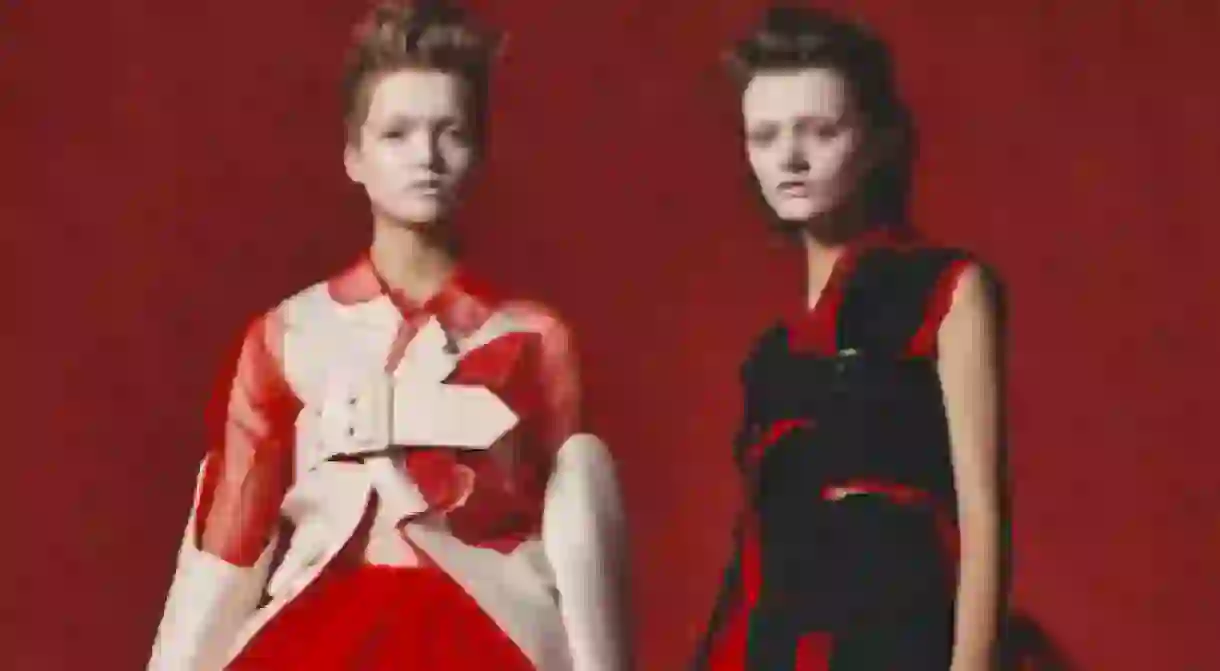Fashion Loves an Outsider: An Inside Look at the Met's Rei Kawakubo Exhibit

On May 1, New York’s Metropolitan Museum of Art hosts its annual Met Gala, an invitation-only fundraiser that brings out celebrities, designers, and hand-picked fashion enthusiasts (willing to drop as much as $30,000 for a Met Gala ticket, according to CNN) alike, all in a bid to benefit the museum’s Costume Institute. The lavish party also celebrates the launch of the Costume Institute’s spring exhibition. (The Costume Institute is the only part of the Met that is self-financed.)
This year’s exhibition, “Rei Kawakubo/Comme des Garçons: Art of the In-Between” spotlights the work of Japanese designer Rei Kawakubo who founded Comme des Garçons (French for “like some boys”) in 1969. In the 1980s, Kawakubo was part of a radical group of radical Japanese designers including Yohji Yamamoto and Junya Watanabe who took Paris by storm. And the 74-year-old designer hasn’t stopped innovating design since. In the exhibition, which opened to press today, (it opens to the public on May 4) you are faced eye-level with the mannequins without any glass barrier. Perhaps, this is a way for the ultimate fashion outsider (Kawakubo is a known recluse who refuses to explain any message behind her clothes) to come face-to-face with her admirers. Viewers can even touch the clothes in the post-2014 “Clothes/Not Clothes” section.
The following is a collection of photographs from the exhibition, (which does not include any menswear or any other brands under the Comme des Garçons label).



What distinguishes Kawakubo’s designs?

The exhibit will feature about 120 Comme des Garçons womenswear designs by Kawakubo. Central to Kawakubo’s work are themes of ambiguity in exploring parallel realms like East/West, male/female, past/present—thus the term “in-between,” which heralds the notion of the exhibition.
Alexander McQueen on Kawakubo
“Every designer you ask will be influenced by Rei in one way or another. What’s really impressive about her is that she’s never backed down. I’ve been in this business for 20 years now and I know how tough it is to do the things you want to do. Rei doesn’t compromise, nor should she. No one should compromise. Compromise makes people dull.” — Alexander McQueen, as quoted in AnOther Magazine.

Andrew Bolton, Curator of the Met’s Costume Institute on Kawakubo

“No other designer is as challenging or as brave as Rei. People keep asking me, ‘Why did you choose Rei as the second living designer?’ It’s like, just look at the clothes. They speak for themselves.” — Andrew Bolton as quoted in Vogue.
Edward Enninful, Edior-in-Chief of British Vogue on Kawakubo
“She proved that you could be an outsider and still be influential, that you could follow your instincts and still make a difference. You didn’t have to be the norm. You didn’t have to conform.” — Edward Enninful as quoted in AnOther Magazine.

Kawakubo in her own words

“It seems that with fashion, as with art, things are getting easier in one sense but at the same time it is getting harder to be stimulated about things or excite people. Without that impetus of creation, progress is not possible. All kinds of ways of expression are spreading out all over the place, information is overflowing, and it’s harder and harder to be excited about anything. In order to be stimulated or moved in the future, we probably have to go into space and look at our world from there.” — Rei Kawakubo as quoted in AnOther Magazine.
Comme des Garçons: behind the label

Adrian Joffe, Kawakubo’s husband is president of Comme des Garçons, as well as Dover Street Market. He’s known in the industry as being protective of his wife, as well as serving as her translator during interviews. “I am just working day-to-day with what I believe . . . just dealing with my work—just like everybody else,” Kawakubo tells Vogue in an April interview. About the Met Gala, she says, “It’s a Met show for Comme des Garçons, not a Comme des Garçons show at the Met.” In the aforementioned article, Kawakubo even jokes about not wanting to attend the red carpet, keeping her elusive presence alive.
As a label, Comme des Garçons may be known as a brand with a cult following, but it’s also a profitable one. According to Racked, the label pulled in $280 million in 2016. Additionally, the brand has collaborated with more accessible labels, like Converse, Speedo, and even fast-fashion giant, H&M.
The brand has something for everybody. If you’re not keen on wearing an ethereal gown of black folds, perhaps you’re the Comme des Garçons zip-fold wallet is more your speed. As avant-garde as the label is, there’s also PLAY, a minimalist knitwear line that mixes prep school chic with a cheeky little heart.
But certainly, the artistry of Kawakubo’s designs, infused with a spirit of rebellion that encapsulates the designer’s life—from when she first took Paris in 1981 to today—is Met Gala-worthy, as the designer’s legacy is celebrated by fashion’s finest.













